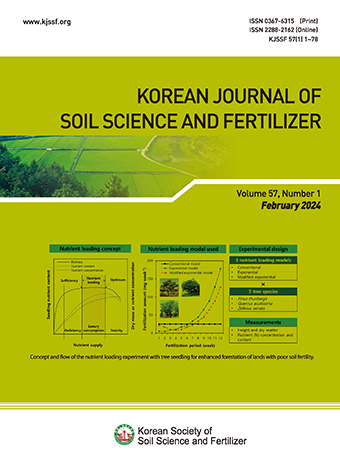Original research article
Abstract
References
Information
Asai, H., B.K. Samson, H.M. Stephan, K. Songtikhangsuthor, K. Homma, Y. Kiyono, Y. Inoue, T. Shitaiwa, and T. Horie. 2009. Biochar amendment techniques for upland rice production in northern. Laos. 1. Soil physical properties, leaf SPAD and grain yield. Field Crop Res. 111(1-2):81-84.
10.1016/j.fcr.2008.10.008- Publisher :Korean Society of Soil Science and Fertilizer
- Publisher(Ko) :한국토양비료학회
- Journal Title :Korean Journal of Soil Science and Fertilizer
- Journal Title(Ko) :한국토양비료학회 학회지
- Volume : 53
- No :3
- Pages :268-276
- Received Date : 2020-06-30
- Revised Date : 2020-08-11
- Accepted Date : 2020-08-21
- DOI :https://doi.org/10.7745/KJSSF.2020.53.3.268



 Korean Journal of Soil Science and Fertilizer
Korean Journal of Soil Science and Fertilizer








